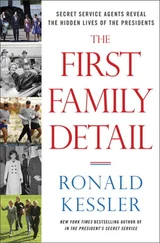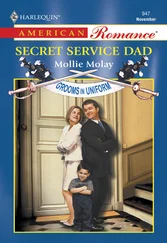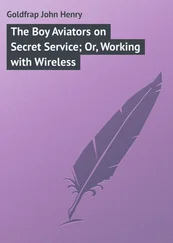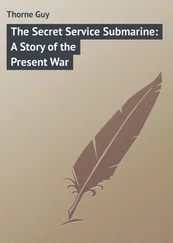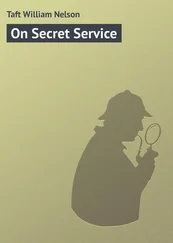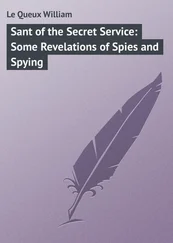The secretary of homeland security also decides when protection begins. Protection of spouses starts a hundred twenty days before the general election, unless authorized before that by DHS or by executive order. To protect a presidential candidate, the Secret Service spends an extra thirty-eight thousand dollars a day beyond agents’ existing salaries. That includes airline tickets for agents and for advance personnel, rental cars, meals, and overtime.
At one point, based on the public record, the Secret Service counted fifteen potential presidential candidates. As it turned out, three presidential candidates received protection. As a former first lady, Hillary Clinton already had Secret Service protection.
While Obama never received a specific threat before his protection started, agents on the Secret Service’s Internet Threat Desk picked up a number of vaguely threatening and nasty comments, mostly directed at the fact that he is African American. Many of the comments appeared on white supremacist websites and said Obama would be assassinated if he took office. Even before Obama decided to run, Michelle Obama expressed concerns to her husband that a black candidate for president could be in jeopardy because of his race.
In the end, says Steven Hughes, deputy special agent in charge of the dignitary protection division, “We really picked him up because he asked for the protection, and then it goes through a whole process of whether we will protect him or not, and it’s really not driven by the Secret Service. It’s something that he asked for, and the secretary of homeland security and the president ultimately said he is a viable candidate, and it’s a go for protection.”
As Hughes speaks, he checks a text message on his BlackBerry It’s a report from the Protective Intelligence and Assessment Division of a threat against a candidate.
“I’m getting them all day long, updates on whether someone on the Internet says something or someone that’s drunk says something,” Hughes says. “Whether it’s very minor or very major, they’re going to send it to me, so I can’t say I didn’t know that was happening.”
Asked if he ever gets any sleep, Hughes says, “With the U.N. coming up next week, where we have an incredible amount of protectees, yeah, we don’t have time to sleep now.”
By August 2008, the Secret Service had arrested Raymond H. Geisel in Miami after he made a threat against candidate Obama in a training class for bail bondsmen. Two members of the class heard Geisel say, “If he gets elected, I’ll assassinate him myself.” When arrested, Geisel had a loaded nine-millimeter handgun, knives, dozens of rounds of ammunition, body armor, a machete, and military-style fatigues in his hotel room. He was charged with threatening a presidential candidate.
In Denver, a group of men with guns and bulletproof vests made racist remarks about Obama and talked of gunning him down as he gave his acceptance speech at the Democratic National Convention in August. They were high on drugs and not capable of carrying out a plot.
Four days before the convention, one of them was pulled over for drunk driving in the Denver suburb of Aurora after a patrol officer spotted the man’s rented Dodge Ram truck swerving erratically. Inside, the officer found two high-powered rifles, a silencer, a bulletproof vest, camouflage clothing, and three fake identification cards. The truck contained enough drug-making equipment to be considered a mobile meth lab. While the Secret Service kept tabs on the case, the men were prosecuted locally on gun and weapons charges.
Chatter among white supremacists on the Internet increased throughout the campaign. As Obama was giving his acceptance speech on November 4, 2008, Ku Klux Klan leader David Duke was rallying white supremacists in a call to action, saying Obama’s election represented a “night of tragedy and sadness.” In an audio message broadcast on a radical website, Duke said, “Barack Obama has a long history of antagonizing white people.” He added, “We as European Americans have to rally for our survival.”
Just before the election, two skinheads in Tennessee were charged with plotting to behead blacks across the country and assassinate Obama while wearing white top hats and tuxedos. In both cases, the Secret Service determined the men were not capable of carrying out their plots.
The day after the election, one of the most popular white supremacist websites got more than two thousand new members. One posting on the site said, “I want the SOB laid out in a box to see how messiahs come to rest. God has abandoned us, this country is doomed.”
Five days before Obama’s inauguration, Secret Service agents arrested Steven J. Christopher in Brookhaven, Mississippi, for allegedly saying on the Internet that he intended to kill Obama. His entries on a website devoted to government conspiracies and unexplained phenomena included racial and anti-Semitic remarks. In one entry, Christopher wrote, “Yes, I have decided I will assassinate Barack Obama. It’s really nothing personal about the man.” He added that he had no way to travel to Washington.
“I don’t own a gun, so maybe someone can give me one,” he said, according to the Justice Department.
Media reports claimed that someone yelled “Kill him,” referring to Obama, at two Republican rallies. But Secret Service agents on the scene and videotapes played afterward revealed no such comments. At a rally for Governor Sarah Palin at Clearwater, Florida, a man yelled “tell him” or “tell them” rather than “kill him,” the Secret Service concluded.
Despite the ranting by racists, throughout the campaign the Secret Service saw no spike in credible threats.
John McCain did not initially request protection and claimed he did not need it. After a congressional hearing on April 7, 2008, revealed that he was not under protection, McCain was urged by both his staff and members of Congress to accept Secret Service protection. He then agreed to it, and his protection began on April 27.
The Secret Service worked with the campaigns so it would know ahead of time who the vice presidential nominees would be and when their names would be announced. It then chose a time on the day of the announcement when protection would begin.
Thus, by the time Sarah Palin—code-named Denali—and Joe Biden—code-named Celtic—were nominated for vice president at their respective conventions, they and their spouses were already under protection. Palin’s husband, Todd, was code-named Driller, and Biden’s wife, Jill, was code-named Capri. Protection for the Bidens began on August 23, 2008 and for the Palins on August 29, 2008.
Before protection began, Secret Service director Mark Sullivan and his team met with each candidate. Like nearly all the Secret Service’s twenty-two directors, Sullivan came up through the ranks. A native of Arlington, Massachusetts, Sullivan graduated from Saint Anselm College in Manchester, New Hampshire. He began his Secret Service career in 1983 as an agent assigned to the Detroit field office.
In 1996, Sullivan became an assistant supervisory agent in charge within the Office of Protective Operations. He later became deputy special agent in charge of the Counterfeit Division. In 2002, he became deputy special agent in charge of the vice presidential protection division. After briefly serving as deputy director, Sullivan was sworn in as director on May 31, 2006.
While the backgrounds of Sullivan and the deputy director are on the Secret Service website, unlike the FBI, the agency does not announce the names of other Secret Service officials when they are appointed.
When Sullivan talks about growing up in “Aah-lington” (Massachusetts) and playing “haah-ky” he speaks with the typical pahk-the-cah-in-Hahvad-yahd accent. His ice hockey team beats the FBI’s team every year. It’s gotten so Director Bob Mueller jokingly accuses Sullivan of hiring for hockey talent.
Читать дальше

